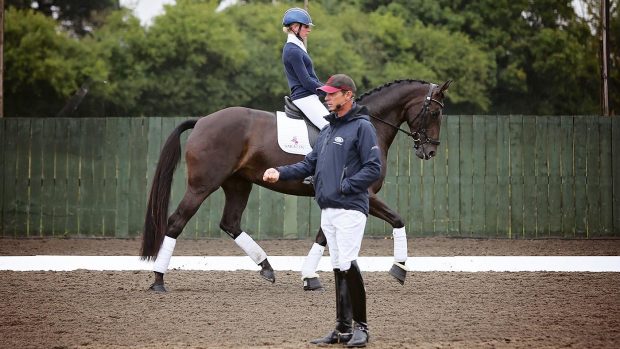With wall-to-wall warmbloods on display in most affiliated dressage classes, it’s easy to believe that these uphill, big-moving types have the sport sewn up.
But while warmbloods may have been bred specifically for the job, there are many other capable breeds out there proving that trainability can triumph over bloodlines, including popular British natives.
Helen Dutton competes her 14hh Welsh section D-type gelding Rowangarth Rhydian at medium.
“At prelim I was looking around the warm-up ring and thinking I needed a warmblood, but the moment I accepted him for what he was it started to come together,” says Helen, who is planning to try advanced medium this year. “His behaviour and attitude are 100%. He has grown so much in confidence and strength and we’ve found a way to make his native power work for him.”
Sara Squires rides the 15.3hh Connemara ex-event gelding Irish Dream for Linda Penfold.
“I never feel that he’s outclassed,” says Sara. “He doesn’t have the warmblood hindleg action, but he has good extension and the judges love him. He’s currently winning at medium and my trainer Peter Storr thinks he could reach prix st georges.”
Jenny Harvey feels that her New Forest medium gelding Crawlands Snapdragon has to work hard for his success.
“He doesn’t have the big warmblood movement and can struggle to extend and really use his shoulder,” she explains. “But he’s such a trainable guy and so manoeuvrable. He can definitely hold his own.”
Dressage trainer Alison Short explains how to maximise the talent of native breeds:
1. Find an instructor who understands native types and can help find a way around any problems, rather than drilling the horse
2. Ride over a fan of poles to improve footfall and length of pace in walk
3. Use half-halts and transitions to ensure a native’s shoulder stays up while in an outline
4. Don’t be intimidated by large, flashy movers in the warm-up. Consistency could win you the class
5. Appreciate a native for what he is and only seek improvement within his capability
Horse & Hound asked ‘can any breed do dressage’ in 9 May 2013 magazine. Purchase a digital back issue



